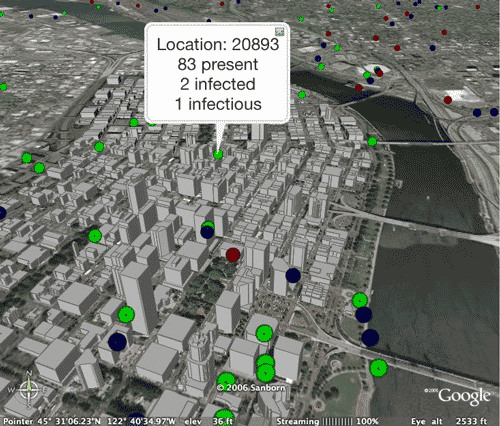In the current implementation of Simfrastructure, we have three kinds of brokers:
- Edge brokers: mediate access to a particular resource (simulation, data, service, etc), removing the need for the resource to communicate directly with any other resource
- Service brokers: coordinate the edge brokers in response to satisfy a given query
- Coordination brokers: coordinate the overall workflow
There are several kinds of edge brokers: simulation edge brokers meant for interacting with simulations; data management edge brokers meant to access the data management module; the visual and data analytics brokers; surveillance data access brokers, etc. These edge brokers can in turn call data and compute grid primitives as necessary. A formal grammar specifies the call structure and the various access rules. Simfrastructure in concert with the simulation models and SimDM are designed to support computational steering; this is crucial for the class of applications we are interested in studying.
It is valuable to go through an illustrative scenario of how the CI might be used in practice by analysts and policy makers for planning and response to natural or human-initiated crises. The CI has been used to support several user defined studies over the past 10 years; see 3 7 19. The scenario illustrates the need to address each of the challenges discussed above. It also highlights the need to solve the complete problem rather than solving it piecemeal. Solutions need to be practical and usable.
In this scenario, during a heat wave in a city, an adversary shuts down portions of the public transit system and a hospital emergency room during the morning rush hour. They spread a harmless but noticeable aerosol at two commuter rail stations. These events, occurring nearly simultaneously, foster a chaotic, if not panic-stricken, mood in the general public. Disinformation released via the mass media enhances the perception of an attack. Simulations of epidemics on social contact networks combined with simulations of urban population mobility and other infrastructure simulations can be used for situation assessment and course of action analysis. Simfrastructure first calls the data broker to see if the network is already available. Assuming the answer is no, Simfrastructure then calls the population mobility broker for constructing the dynamic social network. This in turn will involve fusing information about census data, data on individual activity, and location data from commercial and public databases.







